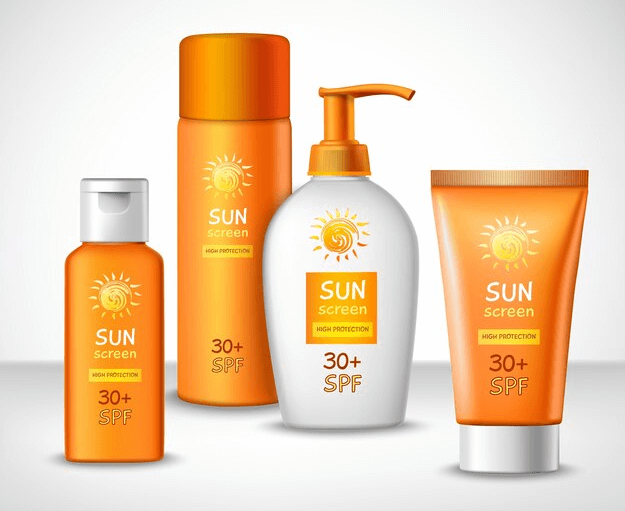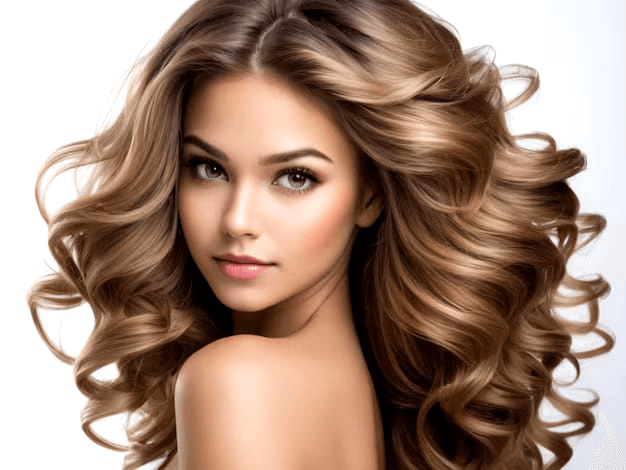
“Crafting the Perfect Hair Care Routine: A Comprehensive Guide for Every Hair Type”
Developing a Hair Care Routine
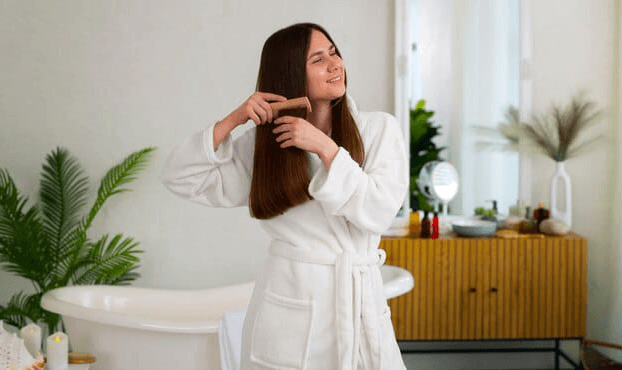
Embarking on a hair care routine is akin to starting a skincare regimen. Once you identify what works best for your hair, you’re likely to stick with it. However, navigating the numerous options available for different hair types can be overwhelming. This comprehensive guide aims to simplify the process, helping you establish a hair care routine tailored specifically to your needs.
Key Factors Influencing Your Hair Care Routine
Your hair care regimen should be customized based on several crucial elements:
Hair Texture and Type: Hair texture and type are foundational in determining the right products and techniques for your care routine. Hair types are generally categorized into three main groups, each with unique characteristics and requirements:

- Straight Hair: Straight hair is often prone to becoming oily more quickly as sebum (natural oil) travels down the hair shaft more efficiently. This type of hair typically benefits from lightweight, volumizing products that add body without weighing it down.
- Wavy Hair: Wavy hair can range from loose, beachy waves to tighter, more defined waves. It often requires a balance of moisture and control. Using products that enhance waves without making them frizzy can be ideal.
- Curly Hair: Curly hair is known for its natural volume and texture. It tends to be drier and more prone to frizz. Curly hair benefits from rich conditioners and styling products that define curls and maintain hydration.
- Kinky Hair: Kinky hair is tightly coiled and can be quite dry due to the natural twists and turns. It requires intensive moisture and products that help in managing shrinkage and maintaining definition.
- Chemical Treatments: If your hair has undergone chemical treatments such as dyeing, bleaching, or relaxing, it is essential to adjust your routine to cater to its new needs.
- Color-Treated Hair: For those with color-treated hair, washing less frequently is advised to prevent color from fading. Look for sulfate-free shampoos and conditioners specifically formulated for color protection. Additionally, regular use of color-safe conditioners and masks can help maintain vibrancy and moisture.
- Bleached Hair: Bleached hair is more porous and prone to dryness. It often requires additional moisture and nourishment. Incorporating deep conditioning treatments, leave-in conditioners, and hair masks into your routine can help restore and maintain the moisture balance.
- Daily Styling Preferences: Your daily styling choices, including the use of heat tools and styling products, play a significant role in determining your hair care routine.
- Heat Styling: If you frequently use heat tools like flat irons, curling wands, or blow dryers, incorporating a heat protectant into your routine is crucial. Heat protectants help shield your hair from thermal damage and prevent moisture loss.
- Natural Styling: For those who prefer to wear their hair natural, focus on products that enhance your hair’s natural texture while minimizing frizz and promoting healthy shine.
- Specific Hair Concerns: Identifying and addressing specific issues you face with your hair is key to establishing an effective routine. Common concerns include:
- Frizz: If frizz is a problem, look for products containing anti-frizz agents or smoothing ingredients. Silicones and oils can help tame frizz and create a sleek finish.
- Dryness: For dry hair, prioritize moisturizing products such as hydrating shampoos, conditioners, and leave-in treatments. Regular use of hair masks can also provide deep hydration.
- Scalp Flakiness: If you experience a flaky scalp, consider using gentle exfoliating treatments or shampoos with soothing ingredients like tea tree oil or salicylic acid to address dandruff and dryness.
Customizing Your Routine
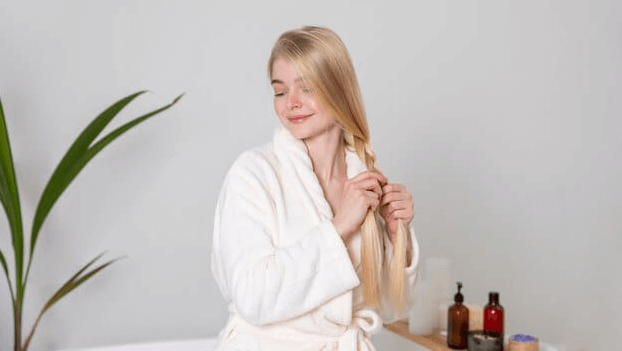
To effectively customize your hair care routine, follow these steps:
- Assess Your Hair: Begin by evaluating your hair’s texture, type, and any chemical treatments or concerns. This will guide you in choosing the appropriate products and techniques.
- Select Products: Based on your assessment, choose shampoos, conditioners, and treatments that align with your hair’s needs. For example, select hydrating products for dry hair, or strengthening treatments for damaged hair.
- Establish a Schedule: Determine how often to wash and treat your hair based on your specific needs. For instance, if you have oily hair, you may need to wash more frequently, while dry hair may benefit from less frequent washing.
- Monitor and Adjust: Regularly review the condition of your hair and adjust your routine as needed. Hair can change over time due to factors like seasonal changes, aging, or new treatments.
By considering these factors and tailoring your hair care routine accordingly, you can achieve healthier, more manageable hair that meets your specific needs and preferences.
Essential Components of Every Hair Care Routine
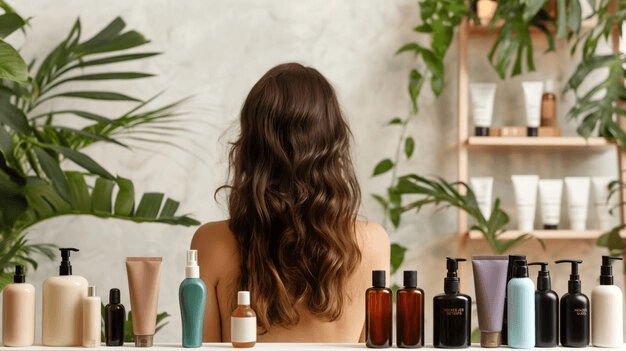
Regardless of your hair type or specific concerns, incorporating a few fundamental steps into your hair care routine can greatly enhance the health and appearance of your hair. Here’s a more detailed look at each essential component:
1. Cleansing
Proper cleansing is crucial for maintaining a healthy scalp and vibrant hair. It helps remove dead skin cells, excess oil, and product buildup without stripping the hair of its natural moisture.
- Regular Cleansing: Over time, sebum (natural oil produced by the scalp) and dead skin cells can accumulate, leading to oiliness, clogged follicles, and potential scalp issues such as dandruff or acne. Using a gentle, sulfate-free shampoo suited to your hair type ensures that your scalp is cleaned without being stripped of its natural oils.
- Chlorine Removal: For those who swim frequently, rinsing out chlorine as soon as possible is essential to prevent damage. Chlorine can dry out the hair and cause color-treated hair to fade. Consider using a clarifying shampoo or a swimmer’s shampoo occasionally to remove chlorine and other residues effectively.
2. Conditioning
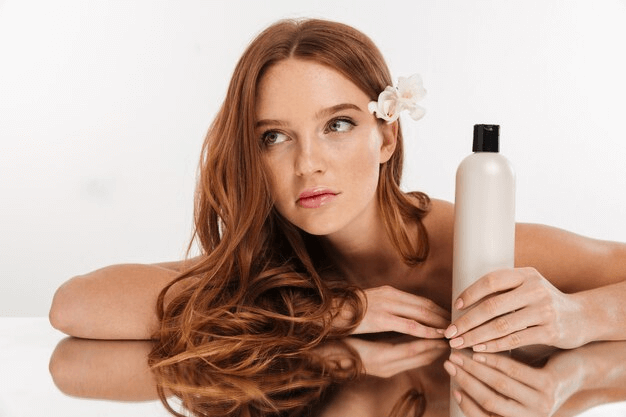
Conditioners play a vital role in hydrating, detangling, and adding shine to your hair. They also help control frizz and improve manageability.
- Hydration: Conditioners typically contain cationic surfactants that adhere to wet hair, helping to replenish moisture lost during the washing process. This hydration helps in maintaining the elasticity and softness of your hair.
- Detangling and Shine: By smoothing the hair cuticle, conditioners make it easier to detangle knots and enhance shine. Choose a conditioner that complements your shampoo and suits your hair type for the best results.
- Frizz Control: For those with frizzy or curly hair, conditioners can also provide essential control and reduce frizz by creating a smooth surface.
3. Moisturizing and Sealing
This two-step process is particularly beneficial for those with dry or textured hair, aiming to lock in moisture and enhance hydration.
- Moisturizing: Apply a hydrating product such as a leave-in conditioner or a hair lotion. These products are designed to infuse your hair with moisture, making it more manageable and less prone to dryness.
- Sealing: Follow up with a sealing oil or serum to lock in the moisture. Oils such as argan, coconut, or jojoba help to create a barrier that prevents moisture loss, reduces frizz, and adds shine.
- Specific Needs: This method is especially beneficial for dry, coily hair types but can be adapted for other hair textures based on individual needs.
4. Detangling
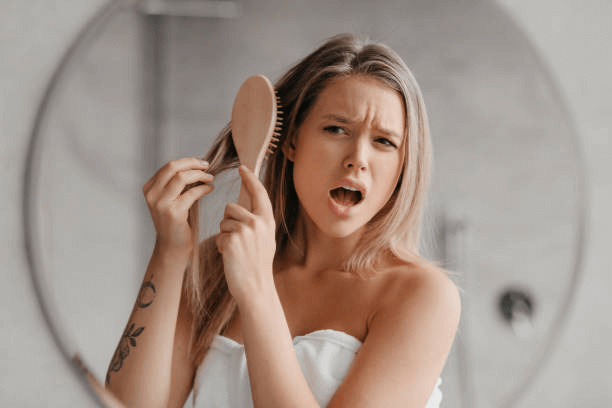
Effective detangling is crucial for preventing hair breakage and ensuring a smoother styling process.
- Choosing the Right Tool: Use tools designed to minimize damage, such as wide-tooth combs or detangling brushes. These tools help to gently remove knots and tangles without causing breakage or excessive pulling.
- Frequency: Depending on your hair type and texture, you may need to detangle daily or less frequently. For curly or wavy hair, detangling while the hair is damp and conditioned can reduce breakage.
5. Styling and Protecting
Proper styling and protection help to achieve desired looks while maintaining hair health.
- Styling Products: Utilize products like volumizers, gels, and styling creams to achieve various looks. These products can add texture, hold, and definition to your hairstyle.
- Heat Protection: When using styling tools such as blow dryers, curling irons, or straighteners, always apply a heat protectant spray. This product creates a barrier that helps shield your hair from high temperatures and prevents damage.
- Minimize Damage: Regularly rotating your styling routine and allowing your hair to rest from heat styling can also contribute to overall hair health.
6. Spot-Treating
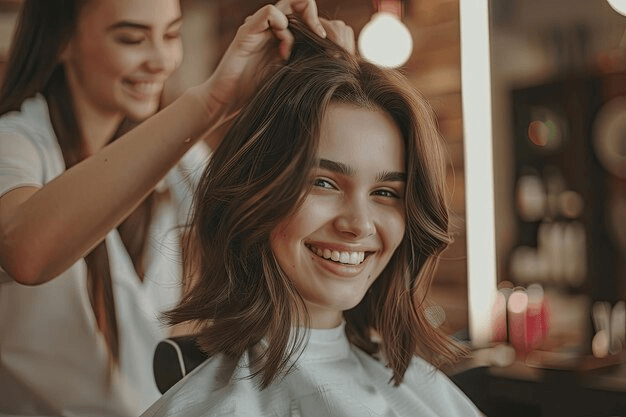
Addressing specific hair issues with targeted treatments can provide additional care and improvement.
- Protein Treatments: For hair that is prone to frizz or damage, protein treatments can strengthen and smooth the hair shaft. These treatments help repair and fortify the hair structure, enhancing resilience and reducing breakage.
- Nourishing Products: For a dry or irritated scalp, consider using nourishing scalp treatments or oils. These products can help soothe, hydrate, and promote a healthier scalp environment.
- Custom Solutions: Tailor your spot treatments to your individual needs, whether it’s enhancing moisture, reducing breakage, or addressing scalp health.
By following these essential components of a hair care routine, you can effectively maintain the health, strength, and appearance of your hair, regardless of its type or specific needs. Each step plays a crucial role in ensuring that your hair remains vibrant, manageable, and protected.
Hair Care Products and Tools
Incorporating the right products and tools into each step of your hair care routine can enhance your results and address your specific hair needs. Here’s a comprehensive guide to the various options available for each stage of your regimen:
1. Cleansing

Proper cleansing is the foundation of a healthy hair care routine. The type of shampoo and conditioning products you choose can greatly impact the cleanliness and health of your hair.
- Clarifying Shampoo: Ideal for deep cleaning, clarifying shampoos remove buildup from styling products, hard water, and environmental pollutants. However, they should be used sparingly (typically once a week or as needed) to avoid stripping the hair of essential oils and moisture.
- Regular “Daily” Shampoo: For everyday use, a mild, sulfate-free daily shampoo is effective in maintaining cleanliness without over-drying the hair. Look for shampoos that suit your specific hair type, whether it’s for color-treated hair, curly hair, or normal hair.
- Leave-In and Deep Conditioners: Leave-in conditioners provide ongoing moisture and protection throughout the day. Deep conditioners, on the other hand, offer intense hydration and are usually used once a week or as needed for extra care.
2. Moisturizing and Sealing

Keeping your hair moisturized and sealed is crucial for maintaining its health and preventing dryness.
- Hair Lotion: Hair lotions offer light hold and protection, making them suitable for daily use. They help in keeping the hair soft and manageable while adding a touch of style and light control.
- Oils: Natural oils, such as argan, coconut, and jojoba oil, are excellent for locking in moisture and providing added strength to your hair. They also help in reducing frizz and enhancing shine. Apply oils to the ends of your hair or use them as a pre-shampoo treatment.
3. Detangling
Effective detangling prevents breakage and makes styling easier.
- Wide-Tooth Combs: These combs are designed to detangle hair gently without causing breakage. They are particularly useful for curly or textured hair types. Use them when your hair is damp and apply a detangling spray to ease the process.
- Detangling Brushes: Specialized brushes with flexible bristles can help detangle hair with minimal damage. These brushes are designed to glide through knots and tangles, making them ideal for all hair types.
- Detangling Sprays and Serums: These products provide slip and reduce friction, making it easier to comb through your hair. They also help in smoothing the hair cuticle and preventing tangles.
4. Styling and Protecting

Styling products and tools help shape and manage your hair while protecting it from damage.
- Mousse and Volumizers: Mousse adds volume and texture to your hair, making it appear fuller and more dynamic. Volumizers work similarly but may also provide additional hold and structure.
- Hair Wax, Pomade, and Gel: These products are used for styling and creating various looks. Hair wax and pomade offer flexible hold with a bit of shine, while gel provides a strong hold and definition. Choose products based on the style you want to achieve and the finish you prefer.
- Heat Protection Sprays: Essential for preventing heat damage, these sprays create a barrier between your hair and styling tools like flat irons, curling wands, and blow dryers. They help protect your hair from high temperatures and reduce the risk of split ends and breakage.
5. Treatments
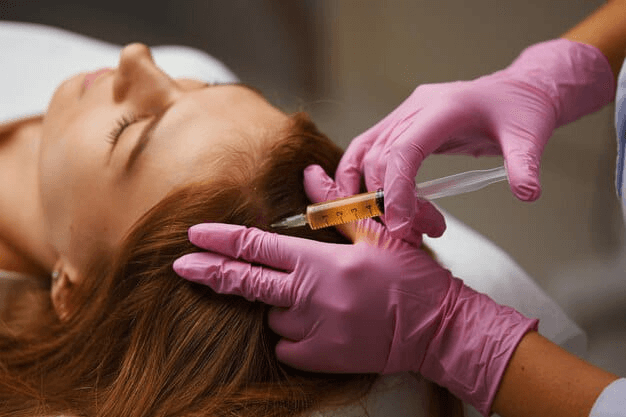
Treatments address specific issues and provide targeted care for your hair.
- Scalp Treatments: Scalp treatments can help with issues like dandruff, dryness, or excess oil. They often contain ingredients that unclog hair follicles, promote circulation, and stimulate hair growth. Regular use can lead to a healthier scalp and improved hair growth.
- Protein Treatments: These treatments are designed to strengthen hair by replenishing lost proteins. They help to repair damaged hair, smooth the cuticle, and increase elasticity. Use protein treatments based on your hair’s needs, especially if it feels weak or brittle.
- Targeted Masks: Hair masks provide intensive conditioning and can be tailored to address specific concerns such as moisture, repair, or shine. Choose masks based on your hair type and concerns, and use them as directed for the best results.
By incorporating the right products and tools into your hair care routine, you can effectively address various needs and maintain healthy, beautiful hair. Tailor your choices to suit your hair type and concerns for optimal results.
Consistency and Routine Order
Achieving noticeable results may take time. Consistency is key, and your routine should include:
- Shampoo and conditioner.
- Heat protection, volumizer, or mousse.
- Shine serum and styling products.
- Drying and setting.
Consult a hair professional for personalized advice on product frequency and usage.
Adapting to Changes
Hair needs can change over time due to various factors, including hormonal shifts and aging. Seasonal changes may also affect your routine; for instance, opt for richer products in winter and lighter formulas in summer.
Enhancing Dull Hair
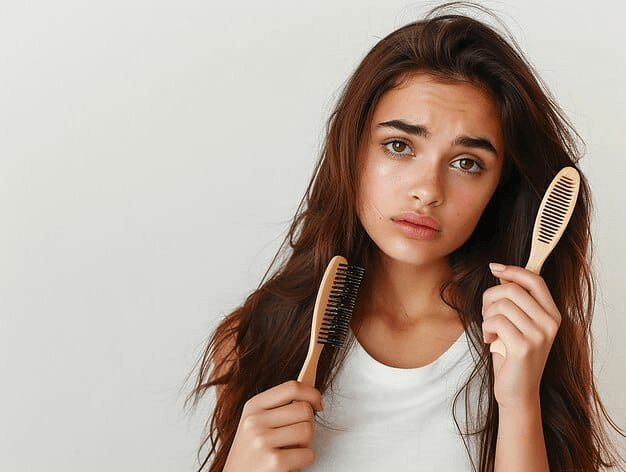
Dull hair often lacks moisture and shine. To rejuvenate it, consider the following methods:
- Revive with Oil: Enhance your conditioner with oils like coconut or argan oil for added moisture. For a deep treatment, apply oil to dry hair overnight and rinse in the morning.
- Shine Sprays: Use hair shine sprays to quickly boost radiance and reduce frizz. Apply lightly to avoid greasiness.
- Supplements: Boost hair health from within with supplements like Viviscal or HairAnew, which contain biotin and other essential nutrients.
- Heat Styling: Minimize damage by using heat styling tools with lower temperatures and incorporating infrared technology. Use heat protectant sprays to prevent damage.
- Humidifiers: Combat dry indoor air by using a humidifier to maintain moisture in your hair.
- Additional Tips:
- Sleep on satin pillowcases to reduce friction.
- Use brushes with boar bristles for shine.
- Try sunflower oil for its nourishing properties.
- Limit chemical treatments to prevent excessive damage.
Essential Hair Care Habits

Adopting a consistent hair care routine can significantly improve the health and appearance of your hair. Here are some essential habits to integrate into your daily and weekly regimen to maintain vibrant and healthy locks:
1. Pre-Shower Brushing
Before you step into the shower, make it a habit to brush your hair. This crucial step helps to detangle your strands, which minimizes breakage when washing. Use a wide-tooth comb or a brush designed for detangling to avoid damaging your hair. For curly or textured hair, consider finger-combing or using a detangling spray to ease knots gently. Brushing dry hair also helps distribute natural oils from your scalp down to the ends, which can improve overall moisture balance.
2. Proper Conditioning
Conditioning is not just about moisturizing but also about applying the right amount of product to the correct areas. Focus on applying conditioner to the mid-shaft and ends of your hair, where it tends to be drier. Avoid applying conditioner directly to your scalp unless you have a specific reason to, as this can lead to an oily buildup. Leave the conditioner in for at least a minute to allow it to penetrate and nourish your strands thoroughly.
3. Regular Hair Masks
Incorporating a moisturizing hair mask into your weekly routine can provide an extra boost of hydration and repair to your hair. Hair masks are formulated to deeply nourish and strengthen hair, making them an essential part of a balanced hair care regimen. Choose masks that suit your hair type and concerns—whether you need deep moisture, protein reinforcement, or repair for damaged ends. Use the mask once a week or more frequently if you use hot tools regularly.
4. Balanced Diet
What you eat directly affects the health of your hair. A diet rich in protein, vitamins, and minerals is crucial for maintaining strong and healthy hair. Incorporate foods high in protein, such as fish, meat, eggs, and beans, into your diet. Additionally, include fruits and vegetables rich in vitamins C and E, which aid in collagen production and overall hair strength. Omega-3 fatty acids, found in foods like flaxseeds and walnuts, also contribute to scalp health and hydration.
5. Stress Management
Stress can have a noticeable impact on your hair, leading to issues like excessive shedding or dullness. Practice stress management techniques such as meditation, exercise, or deep breathing to support overall well-being and, by extension, your hair health. Regular relaxation and self-care can help maintain a balanced scalp and encourage healthy hair growth.
6. Moderate Shower Temperature
Hot water can strip your hair of its natural oils, leading to dryness and damage. Opt for warm water when washing your hair and consider finishing with a cold rinse. Cold water helps seal the hair cuticles, enhancing shine and reducing frizz. This simple adjustment can make a significant difference in the health and appearance of your hair.
7. Sun Protection
Just like your skin, your hair is vulnerable to UV damage from the sun. Protect your strands by using leave-in products that offer UV protection. These products create a barrier against harmful rays and help prevent color fading and moisture loss. Consider using a UV-protectant hair spray or incorporating products with built-in sun filters into your routine.
8. Scalp Care
A healthy scalp is fundamental to having healthy hair. Address any issues such as dryness, itchiness, or dandruff with appropriate scalp treatments. Regularly exfoliate your scalp to remove buildup and stimulate circulation, which promotes healthy hair growth. Use scalp-specific treatments or shampoos designed to address your particular concerns, whether they involve moisture, exfoliation, or soothing irritation.
9. Silk Pillowcases
Switching to silk pillowcases can benefit your hair in several ways. Silk causes less friction than cotton, which helps prevent hair breakage and frizz. Additionally, silk pillowcases are less absorbent, so they don’t strip moisture from your hair as quickly. Consider using silk pillowcases or hair wraps to reduce damage and keep your hair looking smooth and healthy.
10. Smart Styling
When it comes to styling, using high-quality tools and protecting your hair from heat damage is essential. Invest in professional-grade styling tools with ionic technology or solid ceramic plates for even heat distribution. Always use a heat protectant spray before applying heat to your hair, and try to limit the frequency of heat styling to reduce long-term damage. Letting your hair air-dry as much as possible before using hot tools can also help minimize damage.
By integrating these habits into your hair care routine, you’ll be on your way to maintaining vibrant, healthy hair. Consistency and attention to detail are key—take the time to adapt these practices to your specific hair type and needs, and you’ll likely see noticeable improvements in the health and appearance of your locks.



